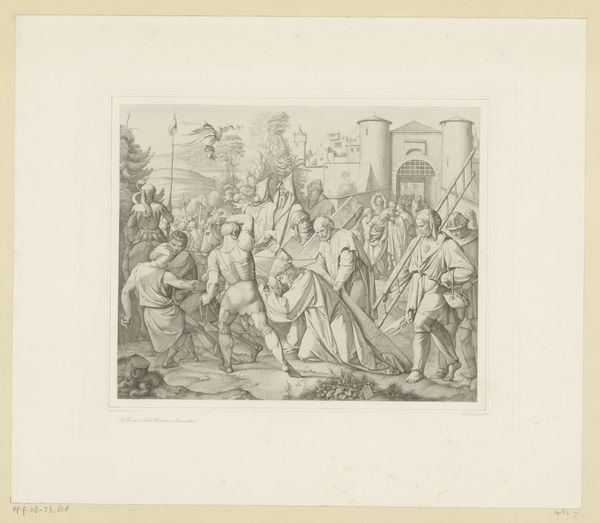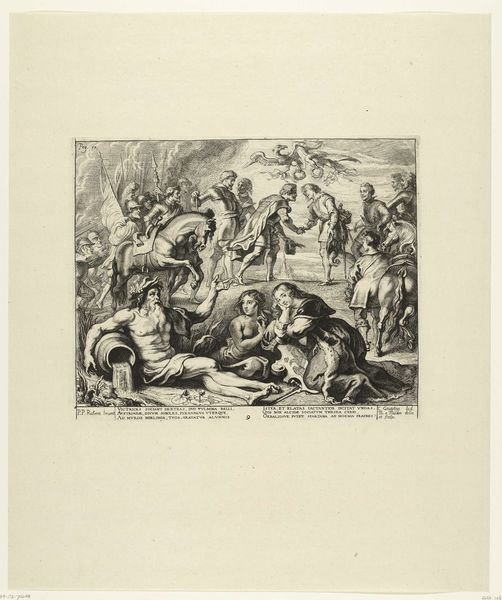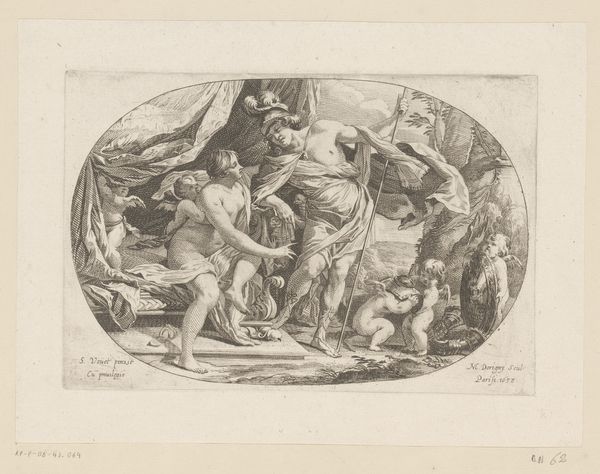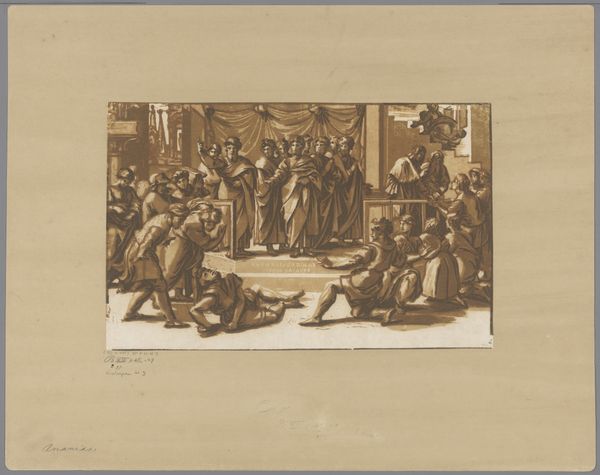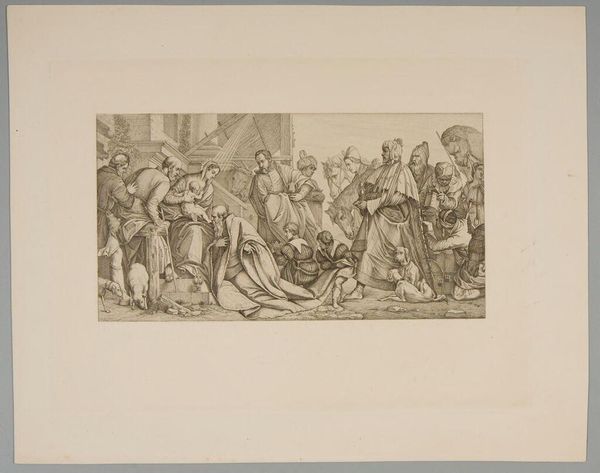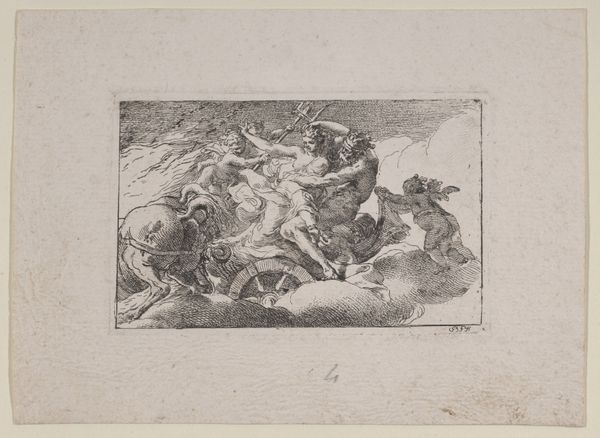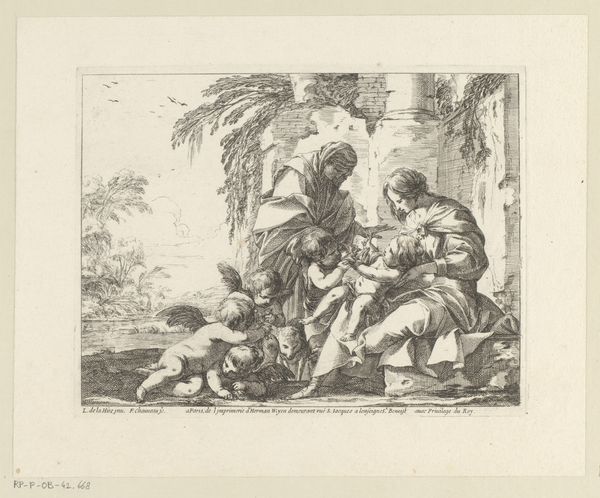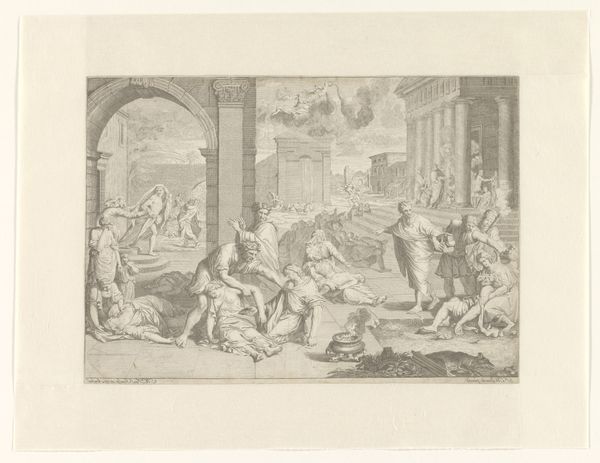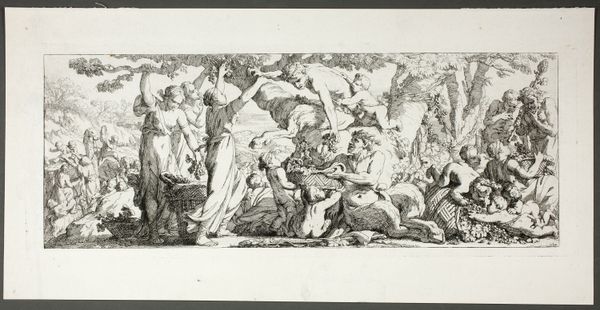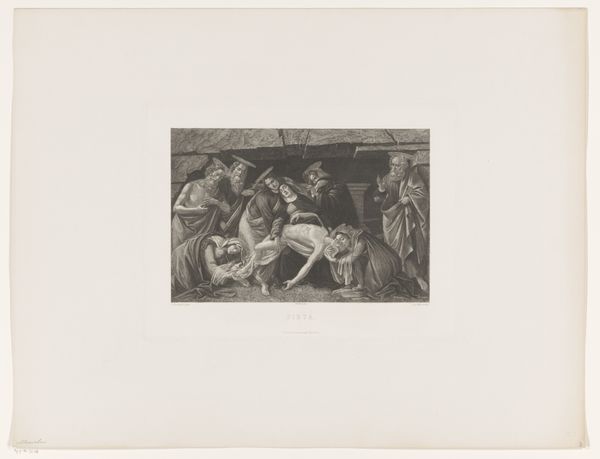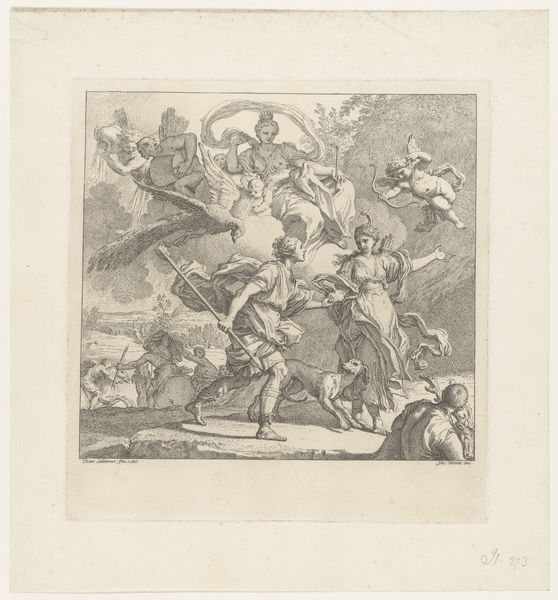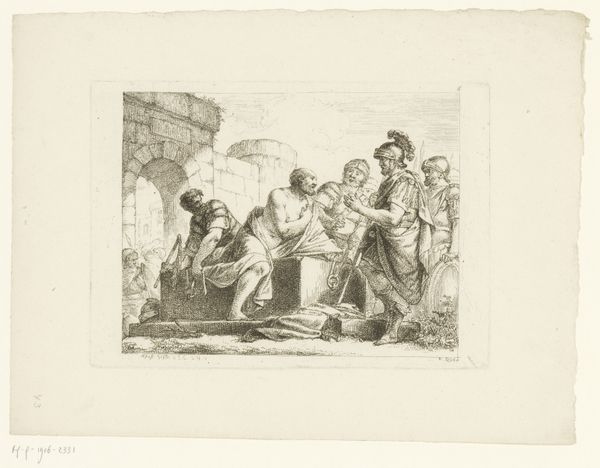
print, woodcut, engraving
#
ink drawing
#
narrative-art
# print
#
figuration
#
linocut print
#
woodcut
#
line
#
history-painting
#
italian-renaissance
#
engraving
Dimensions: 128 mm (height) x 155 mm (width) (billedmaal)
Editor: We're looking at Melchior Lorck's "The Adoration of the Magi," created in 1574. It appears to be a print – maybe an engraving or woodcut? It has this incredible sense of depth despite being so linear. What jumps out to you in terms of its broader implications? Curator: Immediately, I'm drawn to how Lorck uses this well-known biblical scene as a lens to reflect on the political and cultural tensions of his time. Remember, the Renaissance was not just about aesthetic beauty; it was a period of profound social upheaval. Think about the role of religious iconography in justifying power structures. Who are the Magi here, and what do their gifts *really* represent? Editor: So, beyond the surface-level reading of the story, you see commentary on power dynamics? Curator: Absolutely. Consider the historical context. Lorck, a German artist working during the Reformation, likely understood the power of images in shaping beliefs. What does it mean to depict these foreign dignitaries bowing before the infant Christ, given the era's anxieties around foreign influence and religious authority? The line work almost feels… assertive. Deliberate, even. What do you notice about how different figures are rendered? Editor: The Magi definitely have an exoticized look. Almost theatrical. The figure on the left leading them looks almost like a stage manager drawing back the curtain. It’s…uncomfortable. Curator: Exactly. That discomfort is key. Lorck isn't just illustrating a biblical story; he's prompting us to interrogate the narratives we've been told and to recognize the potential for bias and the assertion of dominance within even the most revered stories. This work encourages us to question representation, to think about who is being centered and who is being othered, and the socio-political dimensions behind the Holy scene. Editor: I never thought about a religious scene through such a critical lens before. Curator: That’s the power of art history. It allows us to connect the past with the present, revealing how enduring social and political struggles continue to shape our world.
Comments
No comments
Be the first to comment and join the conversation on the ultimate creative platform.
